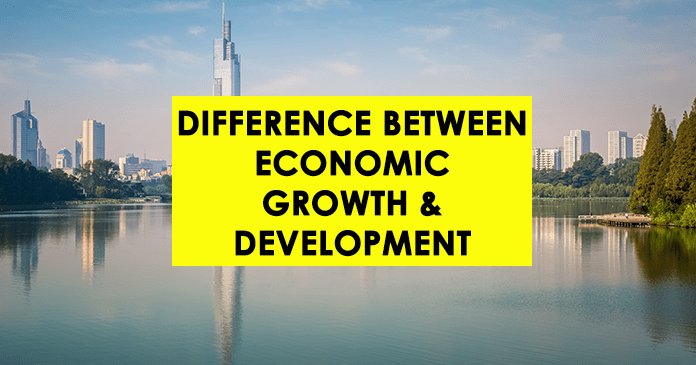It is essential to understand the concepts of economic growth and development correctly. Because it often shows the same meaning. Understanding these concepts without a measurement system makes it difficult to identify between developed and developing countries. Therefore, it will be easier to study these concepts by determining the definitions and criteria set by economists on growth and development.
After reading this article, you would be able to:
Identify, measure, and study the concepts of economic growth and development and various economic criteria.
Let’s start.
What is Economic Growth
Economic growth is the increase in a country’s gross domestic product (GDP) or gross national product (GNP) and per capita income over a period of time.
Economic growth in terms of the production possibility curve:
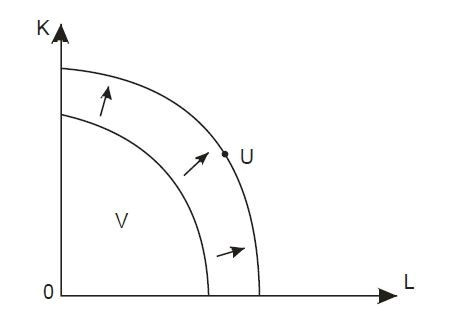
The continuous shift of the production possibility curve to the right over time can describe as an economic growth process.
This shows the expansion of the production capacity of the economy. There must one or more factors that affect such a shift to the right.
- Increasing the supply of resources.
- Increasing the quality and productivity of resources.
- Technological advancement
The change in production capacity boundary to the right indicates an increase in GDP or full employment over time.
Historical background of economic growth and development
The world economic downturn occurred in 1929. World War II also took place from 1939-44. These two significant events have primarily led to a focus on economic development issues.
Adam Smith, considered the father of economics, published the book Wealth of Nations in 1976. This book is said to be the first step in development economics. After Adam Smith, economists like David Ricardo, Karl Marx, and Keynes turned their attention to this field. But they were more concerned about economic growth in Western European countries.
The early Keynesian view was that the economy was always in full employment. Keynesians argued that growth was not so relevant to the economy. But economists such as Keynes, Harald-Duma, and Nicholas Calder, highlighted the importance of growth models.
Definitions of economic growth and development
Economists tried to identify the difference between economic growth and development for a long time. In the early days, the growth and development meant the same concept.
Growth = Development
In the past, real per capita income used as a general measure of growth or development. In that case, the economic growth rate of a country should exceed the population growth rate. However, real per capita income must be evenly distributed. Otherwise, it will not raise the living standards of the people.
In post-World War II, economists said that economic development could achieve if economic growth. Later, there was economic growth in many countries.
Economists have argued that the concept of growth has shortcomings because poverty has not eradicated at a similar pace, the income gap has widened rapidly, and unemployment has risen.
Economic growth brought with it benefits such as improved market forces and increased demand for labor. But they were not fairly divided among the people.
Thus the concept of development was further expanded.
Development = Growth + Change
Accordingly,
- technological
- structural
- organizational
Changes added to the development concept.
By the 1960s, the concept of development continually extensive. During this period, three main factors identified in defining development.
- Eliminating Poverty with Economic Growth
Today, developed countries institutionalized poverty.
- Reducing unemployment
At present, people migrate from service-oriented countries to product-oriented countries due to a lack of employment.
- Reducing income distribution inequality
Michael Tedaro’s definition
Economic growth is the annual increase in the gross domestic product (GDP) and GDP of an economy from 5% to 7% or more, even if the economy’s production capacity has been at a static or low static level for a long time.
Until the middle of the 20th century, economic development considers as follows.
- Increasing people’s employment and other economic opportunities by increasing GDP and real per capita income.
- Completion of the conditions necessary for the distribution of economic and social benefits.
This seals the benefits of growth. At the same time, as the welfare of the people increases and grows, its benefits seep into society.
Achieving economic growth in a country is an essential or necessary condition of economic development. However, a state cannot consider a developed country just because it’s per capita income has increased, and it has become rich.
Criteria such as gross domestic product and per capita income are problematic in measuring development. But those criteria used to measure growth relative to other economic development and metrics. There are several reasons for this.
- A large number of people use gross domestic product (GDP) or per capita income as a measure with a clear definition.
- National income data can calculate very accurately in many countries.
- Traditionally this criterion used as a development criterion.
- Comparing with other criteria of development such as life expectancy, infant mortality or maternal mortality rates, health resources, life expectancy.
Development is a broader process than economic growth. Economic development is the qualitative and structural change that takes place in an economy over time.
Criteria for measuring development
There is no decision on what criteria to measure economic development because those measurements change from time to time with the development of the concept.
1. Per capita real GDP
This is the traditional unit of measurement of development. This will make it easier to assess the quality of life in different countries. By using GNP instead of GDP, a country as a whole can know its income in terms of domestic and foreign contributions. It also shows the contribution to consumption, savings, investment, and exports. Per capita income can calculate by dividing the country’s gross domestic product or income by the median annual population. Here the real per capita income can be calculated by calculating it at a fixed price.
Disadvantages of Per capita Real GDP
- Double count errors,
- Non-disclosure of quality features,
- Ignoring added values,
- Exclusion of depreciated goods,
- Non-disclosure of the income distribution,
- Ignoring structural changes in the economy
With these disadvantages and limitations, it still uses general measures because of the advantages mentioned above.
2. Purchasing Power Parity
This calculates as follows.

Common Nominal Exchange Rate is used to compare the per capita real GDP of different countries.
For example,
If all countries use the US dollar (US$) for this purpose, the nominal value of the currency varies from country to country as high and low. It does not reveal the actual value, and the real value must calculate.
How to calculate the real value can understand from the above equation.
Per capita In addition to national income, there are several traditional criteria used in economics to measure development.
1. Economic Indicators
- Unemployment level
- Labor Force
2. Health Indicators
- Mortality Rates (Maternal Mortality Rates)
- Malnutrition, anemia
- Life expectancy
- Risk of transmission of infectious diseases
3. Education Indicators
Number of
- registered students
- Secondary education students
- students studying in universities
- students dropping out of school
Also, several key economic indicators can identify based on basic needs indicators.
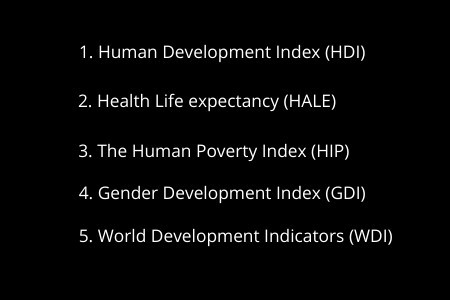
The Human Development Index is a common measure used by many countries. Under this 03 main points are taken into consideration.
- Life Expectancy
- Literacy rate
- Purchasing Power parity Index
The New Vision of Development
By the 1970s / 80s, most countries in the world were making progress in economic growth. But it did not prevent poverty, hunger, unemployment, and unbalanced economic growth. As a result, economists had to look at a new view on economic development. According to Michael Todaro (2009), there are three main objectives.
1. Enhancing and expanding the basic needs of food, housing, health, and safety.
2. Improving the standard of living
The following points take into consideration.
- Increase in revenue,
- Expansion of additional employment opportunities,
- Provide a chance to get a good education
- Evaluation of human and cultural heritage
3. Increasing the economic and social choices that individuals and people have.
That is, to provide opportunities to meet the needs of the people without any influence.
Sen’s – capability approach: Economic growth and development
Minister Sen is a Nobel Prize-winning economist. (1988) He presented the capability approach. It shows that a person’s developmental ability determines whether he or she is poor or not. There must make choices and opportunities for that. Thus, he pointed out that economic growth cannot consider as an end in itself and that more attention should pay to the development of free human capacity. It points out that 03 key values of development need to fulfilled for that.
- Sustenance – The ability to meet basic needs
- Self Esteem
- Freedom from servitude
Many economic and social scientists accepted zen’s idea. Accordingly, development was considered a multidimensional process. Improving the living standards of the people from bad to good is development. Here will focus on five main points.
- Lack of material resources required for a good life.
- Being physically weak or ill.
- Deterioration of social relations.
- Insecurity
- No power
Restoring these features to a positive state is considered development. It is an interconnected process.
Sustainable Development
Today, this concept identified as one of the most important. As shown below, it is an integrated approach to economic, social, and environmental issues.
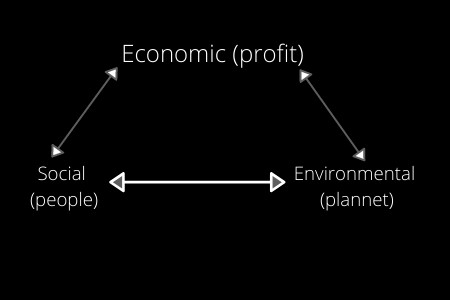
Sustainable development occurs when the following factors are satisfied.
- Growth
- Productivity
- Stability
- Employment
Inclusive Development
This concept focuses on 3 points. They are
- broad base growth
- shared growth
- pro-poor growth
The difference that comes from combining these three concepts is development. It focuses on two factors. They are growth rate and growth patterns. Achieving balanced growth in the agriculture and services sectors is essential for achieving rapid economic growth. Further participation of all communities expect.
According to the World Bank’s 2008 Growth and Development Report, Inclusive development is about equity, equality of opportunity, and market and service change.
Measures of income inequality
Income inequality means that there is a higher income concentration in one population compared to another.
These are some measures that can use to measure income inequality.
Lowrance Curve

Lawrence curve uses to measure the income distribution disparity of a country. It is called because Lawrence presented it. There is no income inequality in this curve. But as we move right along this line, income inequality changes.
This gini coefficient is used to measure the income distribution represented by the Lawrence curve. An Italian named Gini introduced it.
Measuring income inequality according to the Gini coefficient
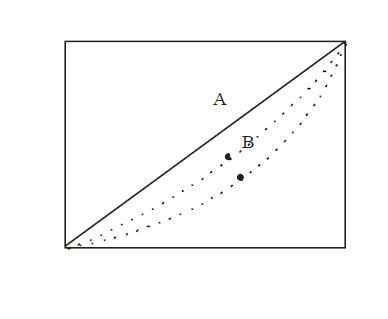

The gini coefficient calculates, as shown in the above formula. Accordingly, the value here is in the range of 0 – 1. If the country’s income evenly distributed, it based on the Lawrence curve. Also, if the total income is between 1%, its value is 1. That is, it shows that there is a large anomaly.
Kuzenet Curve
The Kuznets curve also measures income distribution inequality. Income distribution inequality calculates as follows.

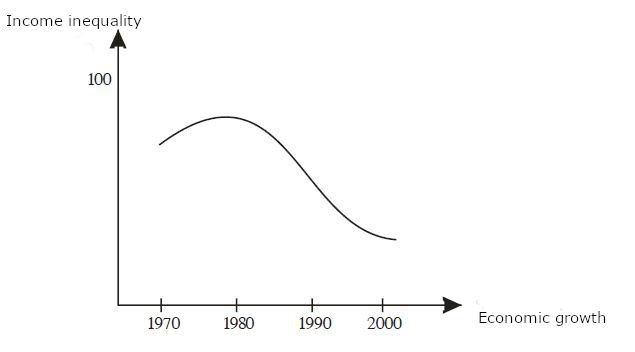
According to the Kuznets chart, income inequality increases in the early stages of a country’s economic growth. This discovered by an economist named Kuzenet.
His empirical studies show that income inequality increases in the early stages of a country’s economic growth. Then secondly gradually decreases. The shape of this curve is similar to the shape of an inverted English ‘u’ letter.
Questions
1. What is the difference between economic growth and development?
2. What are the determinants of economic growth?
3. Briefly explain the evolution of thought on economic growth and development
4. What are the measures of development in countries?
I think the answers to these questions can found in this article. If there is any problem, leave a comment. I’m here to support you.
Conclusion
All right then. In this article, you learned to identify, measure, and study the concepts of economic growth and development and various economic criteria. So did I miss anything? Let me know by leaving a comment below right now.


